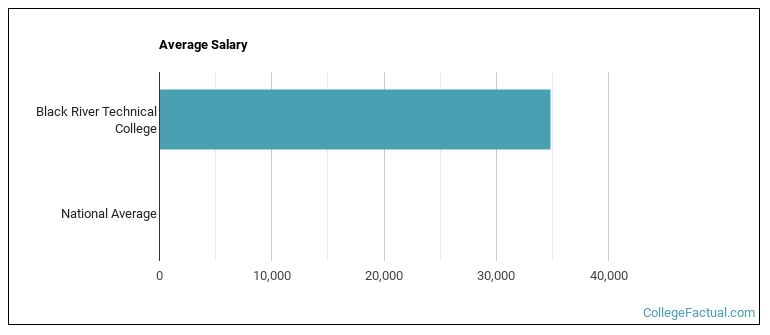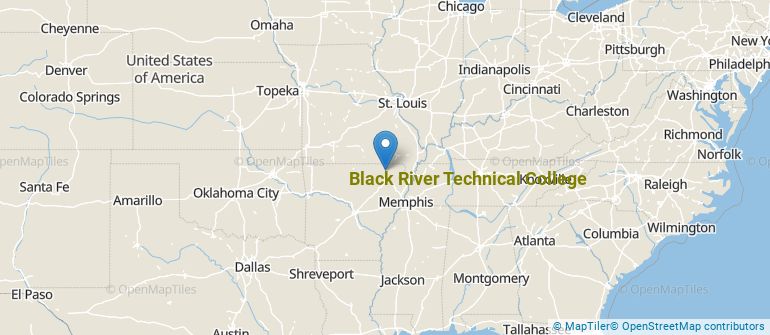 by our College Data Analytics Team
by our College Data Analytics TeamExplore the best ranked schools for the programs you are most interested in.
College Factual ranked Black River Technical College as #1,976 out of 2,152 colleges and universities in the country on its 2025 Best Colleges list.
Black River Technical College is also ranked #30 out of 36 schools in Arkansas.
If you are worried about getting into Black River Technical College, don't be. The school has a liberal open admissions policy, which means you only need to meet basic requirements in order to be admitted. Still, be sure to submit a complete application and provide any other requested materials.
The student to faculty ratio at Black River Technical College is about average at 16 to 1. This ratio is often used to gauge how many students might be in an average class and how much time professors will have to spend with their students on an individual level. The national average for this metric is 15 to 1.
Another measure that is often used to estimate how much access students will have to their professors is how many faculty members are full-time. The idea here is that part-time faculty tend to spend less time on campus, so they may not be as available to students as full-timers.
The full-time faculty percentage at Black River Technical College is 56%. This is higher than the national average of 47%.
The freshmen retention rate is a sign of how many full-time students like a college or university well enough to come back for their sophomore year. At Black River Technical College this rate is 62%, which is a bit lower than the national average of 68%.
During the 2017-2018 academic year, there were 1,350 undergraduates at Black River Technical College with 768 being full-time and 582 being part-time.
The net price is calculated by adding tuition, room, board and other costs and subtracting financial aid.Note that the net price is typically less than the published for a school. For more information on the sticker price of Black River Technical College, see our tuition and fees and room and board pages.
It's not uncommon for college students to take out loans to pay for school. In fact, almost 66% of students nationwide depend at least partially on loans. At Black River Technical College, approximately 8% of students took out student loans averaging $4,434 a year. That adds up to $17,736 over four years for those students.
Get more details about paying for Black River Technical College.

See which majors at Black River Technical College make the most money.
Get more details about the location of Black River Technical College.

Contact details for Black River Technical College are given below.
| Contact Details | |
|---|---|
| Address: | 1410 Hwy 304 East, Pocahontas, AR 72455 |
| Phone: | 870-248-4000 |
| Website: | www.blackrivertech.edu/ |
| Most Popular Majors | Bachelor’s Degrees | Average Salary of Graduates |
|---|---|---|
| Allied Health & Medical Assisting Services | 500 | NA |
| Liberal Arts General Studies | 454 | NA |
| Practical Nursing & Nursing Assistants | 131 | NA |
| Criminal Justice & Corrections | 130 | NA |
| Vehicle Maintenance & Repair | 99 | NA |
| Industrial Production Technology | 88 | NA |
| Nursing | 75 | NA |
| Precision Metal Working | 71 | NA |
| Computer Information Systems | 52 | NA |
| Clinical/Medical Laboratory Science | 52 | NA |
Online learning is becoming popular at even the oldest colleges and universities in the United States. Not only are online classes great for returning adults with busy schedules, they are also frequented by a growing number of traditional students.
In 2022-2023, 938 students took at least one online class at Black River Technical College. This is a decrease from the 963 students who took online classes the previous year.
| Year | Took at Least One Online Class | Took All Classes Online |
|---|---|---|
| 2022-2023 | 938 | 417 |
| 2021-2022 | 963 | 486 |
| 2020-2021 | 876 | 369 |
| 2018-2019 | 749 | 162 |
Learn more about online learning at Black River Technical College.
Footnotes
*The racial-ethnic minorities count is calculated by taking the total number of students and subtracting white students, international students, and students whose race/ethnicity was unknown. This number is then divided by the total number of students at the school to obtain the racial-ethnic minorities percentage.
References
More about our data sources and methodologies.